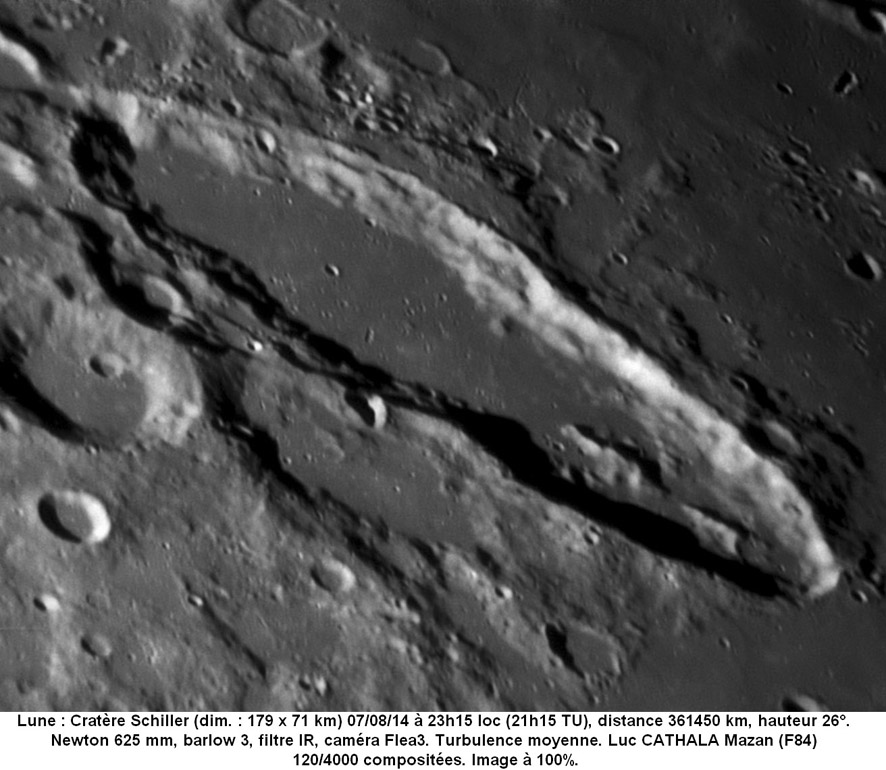Difference between revisions of "August 10, 2014"
| Line 14: | Line 14: | ||
<br /> | <br /> | ||
<strong>Related Links</strong><br /> | <strong>Related Links</strong><br /> | ||
| − | <em>[ | + | <em>[[21st Century Atlas of the Moon|21st Century Atlas]]</em> chart 24.<br /> |
Luc's [http://www.astrobin.com/users/CATHALA.Luc.CATLUC/ website]<br /> | Luc's [http://www.astrobin.com/users/CATHALA.Luc.CATLUC/ website]<br /> | ||
<br /> | <br /> | ||
Latest revision as of 08:23, 28 October 2018
Either Or

image by Luc CATHALA Mazan, Vaucluse FRANCE
Schiller was formed by a simultaneous grazing impact of three or four projectiles. The individual crater widths range from about 50 to 70 km. According to calculations, craters this size would have required projectiles 5 to 7 km in diameter if the impact angle was 5°, and double that size if 1°. Assuming 5°, the four separate 6 km wide projectiles before break up could have been a 12 km diameter projectile which, with 90° impact, would have made a single crater 300 km wide. If Schiller's impact angle were 1° the equivalent single crater would have been about 500 km wide. If my calculations are correct - someone should check! - then Schiller is the bizarre replacement for a small impact basin, about the size of the outer ring diameter of Grimaldi. Even though basins are fascinating I guess I am glad we have Schiller instead.
Chuck Wood
Technical Details
August 7 2014, 21h15 UT. Newton 625 mm, 2739mm focal length, on equatorial platform, all home made (excluding mirrors ). Barlow 3 , IR 742 filter, camera Flea3, average turbulence.120 images stacked on 3250. Processed with AutoStakker, Registax.
Related Links
21st Century Atlas chart 24.
Luc's website
Yesterday's LPOD: A Course Full of Input
Tomorrow's LPOD: So-Called Super Moon
COMMENTS?
Register, Log in, and join in the comments.



